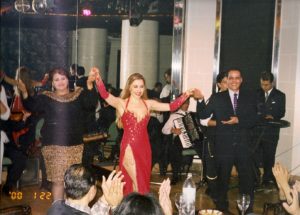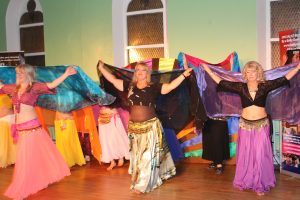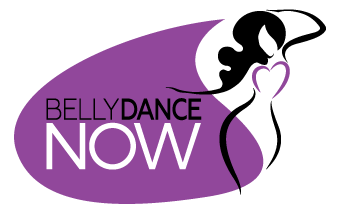More about ……. Yasmina of Cairo
“I have known Yasmina for many years now. I saw her perform in Cairo, asked her to work with me on my ‘Farida Adventures’ then teach at events in the UK like my ‘Shimmy Up North‘ event at Borwick Hall and ‘Fantasia’ in London. More recently, I love working with her on the JWAAD accredited courses where the extent of her in depth knowledge really comes into its own. It is wonderful that we have Yasmina involved with developing and teaching on these courses now. Yasmina is also teaching and performing at Fantasia 2019 so I thought it would be interesting to find out more about her life, her plans and what she will be teaching”…….. Kay Taylor
www.fantasiafestival.uk
How did you get into belly dance?
Many years ago after finishing a degree in photography I took a holiday in Morocco, saw a dancer and heard Arabic music for the first time. It inspired me to take classes in London and from then on I was hooked!
Tell us a bit about your dance journey – how did you end up being a professional dancer in Cairo?
I began my career performing in the Turkish, Greek and Arabic nightclubs in London in the mid  1980’s (I was simultaneously working as a fashion photographer at the time, and used the dancing jobs to help establish my studio). Through contacts in London I began being offered contracts abroad, first in Morocco, then Italy, then for a Lebanese impresario called Toros Siranossian based in Beirut, who sent me to dance all over the Middle East for four years during the early 1990’s. I took a trip to Cairo in 1994 to buy costumes and totally fell in love with the place. I was determined to dance there and a year later arrived there on my own to try my luck.
1980’s (I was simultaneously working as a fashion photographer at the time, and used the dancing jobs to help establish my studio). Through contacts in London I began being offered contracts abroad, first in Morocco, then Italy, then for a Lebanese impresario called Toros Siranossian based in Beirut, who sent me to dance all over the Middle East for four years during the early 1990’s. I took a trip to Cairo in 1994 to buy costumes and totally fell in love with the place. I was determined to dance there and a year later arrived there on my own to try my luck.
What did you like most – and what did you like least – about your time as a professional dancer in Cairo?
 I loved the excitement of being immersed in the culture, having my own orchestra and the creative freedom to produce my own show, performing to Egyptian audiences. Also the learning process, training with choreographers and working on my dance – which completely transformed after I got there.
I loved the excitement of being immersed in the culture, having my own orchestra and the creative freedom to produce my own show, performing to Egyptian audiences. Also the learning process, training with choreographers and working on my dance – which completely transformed after I got there.
The worst things were the uncertainty and insecurity of life as a professional dancer in a very tough business. You are required to draw heavily on your inner resources!
What does your life look like now?
 I withdrew from the wedding and nightclub performance scene in 2004, but continued living in Egypt and being connected to the dance. I bought a large apartment close to the pyramids which I’ve been using ever since as a Belly Dancers’ B&B, hosting dancers from all over the world. As well as accommodation I provide one on one dance classes and workshops, plus photo shoots both at the B&B and on location around Egypt. In addition I perform and teach each year at festivals and events worldwide. I have made two documentaries about the dance in Cairo, the second of which is released this year. Finally I have been working on a novel set in the belly dance world, which may or may not get published!
I withdrew from the wedding and nightclub performance scene in 2004, but continued living in Egypt and being connected to the dance. I bought a large apartment close to the pyramids which I’ve been using ever since as a Belly Dancers’ B&B, hosting dancers from all over the world. As well as accommodation I provide one on one dance classes and workshops, plus photo shoots both at the B&B and on location around Egypt. In addition I perform and teach each year at festivals and events worldwide. I have made two documentaries about the dance in Cairo, the second of which is released this year. Finally I have been working on a novel set in the belly dance world, which may or may not get published!
You are currently spending more time in the UK – how are you finding the dance scene?
I feel very happy to have been offered the chance to participate as a regular teacher in the  JWAAD courses (the Music Course and History and Culture Course), as it is so important that dancers have the opportunity to deepen their knowledge of the culture of oriental dance. Teaching this kind of theory is a trend that is spreading worldwide right now, and although it still only attracts a hard-core of students, it is a vital resource. The dance is taught and promoted very differently in different parts of the world, and I would say that the UK still has some catching up to do in attracting young dancers who want to put the hours in and train at a high level. There are lots of women who have discovered its joys and benefits, but perhaps there needs to be a more cohesion in the dance community to support each other’s events and expose new students to the best of what is out there, so they will be inspired! There are some notable individuals who are making incredible efforts in this regard – I really hope that those efforts pay off with a ripple effect that has more wide-reaching impact.
JWAAD courses (the Music Course and History and Culture Course), as it is so important that dancers have the opportunity to deepen their knowledge of the culture of oriental dance. Teaching this kind of theory is a trend that is spreading worldwide right now, and although it still only attracts a hard-core of students, it is a vital resource. The dance is taught and promoted very differently in different parts of the world, and I would say that the UK still has some catching up to do in attracting young dancers who want to put the hours in and train at a high level. There are lots of women who have discovered its joys and benefits, but perhaps there needs to be a more cohesion in the dance community to support each other’s events and expose new students to the best of what is out there, so they will be inspired! There are some notable individuals who are making incredible efforts in this regard – I really hope that those efforts pay off with a ripple effect that has more wide-reaching impact.
What do you like to do to relax?
Ride my horse (when I’m in Cairo), walk in the countryside (when I’m in England), swim, read, watch box sets, go to the theatre, spend time with my family.
What is your star sign?
Scorpio
What is your favourite colour and why?
Purple. I like its depth and mystery.
At Fantasia you are teaching ‘Egyptian Gestures’ – can you tell us a bit about what to expect:
One of the things that connects us as dancers to the songs we choose to dance to is a knowledge of the meaning of those songs. Learning how to express some of that meaning through physically gestures can help ground us while we dance and put us right there inside the story that the song is telling. Even without learning Arabic, many gestures made while dancing are repeated motifs that recur in lots of different songs, and can help give your dance a more ‘authentic’ feel. I’ll be going through the most common ones and how to use them effectively. To join us at Fantasia buy your Fantasia Dancers Day Ticket
You are also holding the first bellydance seminar ‘Perceptions of Bellydance’ – tell us a bit about what to expect:
Do dancers the world over get a bad rap? Perhaps, but belly dancers in particular have to deal with wrong perceptions and ignorance, from the public and also sometimes from the wider dance community. We will be discussing this topic both in relation to the reputation of the dance in Egypt and its standing in the rest of the world.
Do you have any projects coming up that you would like to tell us about?
Kay Taylor and I are planning a study and dance trip in Egypt. We discussed how useful it would be for people who had completed the History and Culture and Music courses to consolidate that study in Egypt. We have planned the trip of a lifetime – a real belly dancers journey of discovery: ‘Essence of Egypt’. You can read more on the Farida Adventures web site.
Lastly, what would you like to be doing in 5 years time?
I hope to still be making a contribution to the world of belly dance, sharing my knowledge and being actively involved. I have always found that for me creativity is key to happiness, so whether it’s through dance, photography or writing I shall continue! I intend to make the best of both worlds being both in Egypt and the UK, as both places hold pieces of my heart.
 Photos of Yasmina by Andre Elring
Photos of Yasmina by Andre Elring
Don’t forget to sign up to our newsletter
Giving UK Bellydance a chance to Shine!
We are always delighted when new events appear on the bellydance calendar. It is a sign that the bellydance community is thriving. This particular event has been designed and brought to life by JWAADs own Catherine Bartholomew alongside her partner in this venture, Chloe Kenny of Shimmy by the Sea. I asked them to tell us a bit about how it came about and what people can expect. Catherine gives us her perspective on how it all came about:
__________________________________________________
It was an unseasonably cold March evening at a holiday camp just outside Hastings. Tired and aching after an exciting weekend of bellydance at Chloe Kenny’s Shimmy by the Sea, I relaxed in the luxurious hot tub, surrounded by a thin sprinkling of snow and the twinkling of stars. With a glass of wine in my hand and Chloe and her minions for company we talked about how successful the weekend had been and how Chloe had created a friendly and fun atmosphere that dancers of all levels could enjoy. That evening, our idea for a new bellydance day festival was born.
of bellydance at Chloe Kenny’s Shimmy by the Sea, I relaxed in the luxurious hot tub, surrounded by a thin sprinkling of snow and the twinkling of stars. With a glass of wine in my hand and Chloe and her minions for company we talked about how successful the weekend had been and how Chloe had created a friendly and fun atmosphere that dancers of all levels could enjoy. That evening, our idea for a new bellydance day festival was born.
At the heart of the idea is community. We both felt very strongly that we wanted to provide the bellydance community in the South  East with a festival that gave all dancers a chance to shine, to be inspired and to find joy and friendship. And so Shimmy & Shine was created!
East with a festival that gave all dancers a chance to shine, to be inspired and to find joy and friendship. And so Shimmy & Shine was created!
We wanted it to be a small one day festival that gave students access to fantastic teachers at a really good price. We wanted to make the festival as friendly and inspiring as we could, with smaller workshop sizes so that students can learn in a relaxed way. We wanted a spacious timetable that allowed time to socialise and meet new friends as well as lots of variety in the workshops provided.
The key to allowing this to all happen is our venue. I have often worked with Woodlands Arts Centre in Gillingham for my regular shows and love the space that it offers. It has a beautiful studio theatre for our evening hafla and lots of clean and bright dance studios for all of our workshops. It even has a café for mingling with friends and a big room which Bellydance Boutique can fill with glittering costumes for sale.
Having the perfect venue at our fingertips meant that we could quickly divert our excitement towards deciding which teachers to  invite. We talked about teachers that had inspired us, both in their teaching and dance skills but also in their community spirit and attitude to fun! We also both felt very strongly that we wanted to give local teachers the chance to shine and to give up and coming stars a platform to launch their careers from.
invite. We talked about teachers that had inspired us, both in their teaching and dance skills but also in their community spirit and attitude to fun! We also both felt very strongly that we wanted to give local teachers the chance to shine and to give up and coming stars a platform to launch their careers from.
As an event organiser it can be easy to get excited about the big names and international stars. Chloe and I are very aware that the uk also has amazing bellydance teachers of its own with a wealth of knowledge & individual style and we felt it was important that home grown talent should be promoted as well.
So we are very excited about our list of wonderful teachers that will be joining us in October 2019. From Belgium we have Queenie, a fabulous dancer full of grace and elegance and already loved in the UK from her visits to JOY, Fantasia and Shimmy by the Sea. From the UK we have Tevec sharing her Turkish styles with us , Candi with her suitcase packed full of dance knowledge, our rising star Safka who has a beautiful Egyptian style, Lea fluttering her wings and Charlotte Wassell who is the Tribal and fusion specialist tutor for JWAAD Bellydance Training courses. Chloe and I will also be joining the fun and teaching workshops.
The first ever Shimmy & Shine festival takes place on Saturday 19thOctober 2019 at Woodlands Arts Centre, Gillingham and costs just £75 for the day, including the early evening Hafla. Visit www.shimmyandshine.com for more information and online booking.
This is our chance to Shimmy & Shine! 🌟
Written by Catherine Bartholomew (www.bellydancewithcatherine.co.uk)
All the JWAAD community wishes Catherine and Chloe lots of success in their new venture.
If you want to read more about Chloe, she is featuring in the NADA magazine – the UK cover girl! www.nadadance.co.uk
Pictures of Queenie and Tevec below:


Guide to Belly Dance Rhythms
This was written by Dorte Evelyn of Ishtar Dance, one of our mentors and tutors.
You can see more of her blogs on her website.
Understanding and knowing rhythms is essential for dancers of any style, but surprisingly many belly dancers are never taught this. This makes it harder to learn the technical nuances needed for strong technique as well as for creating choreographies and not least improvising.
You may think it’s only needed for professional or high level dancers, but even recreational dancers can benefit hugely from understanding the rhythems used in class. It can help them move more confidently and for those with a more academic brain, it can create a better understand the moves and sequences their learning. People have very different learning styles, so throwing too much detail about dums, taqs and maksoums in is not for everyone, but I always try to mention the name and the patterns of the rhythms no matter what level class I’m teaching, so students can take away from it what they need. Maybe because many of my early teacher never did.
I’m personally a very intuitive dancer, and I learned, probably like most, to know and anticipate the rhythms, and also which would follow next, simply by listening and not least dancing to lots of different Arabic music. I didn’t know the names, but I knew what they ‘felt’ like, which is equally important.
Checkout this video which goes through the different belly dance rhythms and shows not only the structure but also how you can move with them.
You may wonder why you should bothered learning more about the rhythms if you can already dance with relative ease to Arabic music, but there are several compelling reasons:
Cultural references
 A good dancer should always make sure they use their music in the right way. If you’re a performer, this will mean cultural appropriation; knowing the background and culture it relates to and how to reflect this in your dancing as well as your costuming. If you’re dancing in a restaurant, this can help you pick your music, but also perform with confidence in front of those audience members who may know that song or genre, by clearly reflecting it in your dancing.
A good dancer should always make sure they use their music in the right way. If you’re a performer, this will mean cultural appropriation; knowing the background and culture it relates to and how to reflect this in your dancing as well as your costuming. If you’re dancing in a restaurant, this can help you pick your music, but also perform with confidence in front of those audience members who may know that song or genre, by clearly reflecting it in your dancing.
If you’re a teacher or creating your own choreography, it will help you to know what is and what isn’t ‘authentic’ and not least, why a dance or certain moves are performed the way they are. I say ‘authentic’ because I believe it’s ok to break the rules to help innovate and create ones own style. But in order to do that, you need to know the rules, and not least why they are there in the first place.
Fusion is a very good example of this. I see a lot of dancers who claim to perform/teach fusion, but they don’t all know the elements that they are fusing together. If you are creating for example a Salsa Belly Dance Fusion, you will need to know and not least have pretty good technique in both styles in order to couple them together well.
Improvising
When making up a dance, whether to be performances in front of an audience, or as a new and  innovative choreography that you may teach others, it will help you immensely to know and understand your rhythms. It will help take the stress out of the moment, because you’ll recognise the building blocks needed to create your final piece of art. Think of it as Lego blocks; the rhythms being your 2s, 4s, 6s or 8 pieces, and the moves you put on top the different colours. It will also save you time in the planning process, because you’ll be able to more confidently pick the moves and combinations that go with the music.
innovative choreography that you may teach others, it will help you immensely to know and understand your rhythms. It will help take the stress out of the moment, because you’ll recognise the building blocks needed to create your final piece of art. Think of it as Lego blocks; the rhythms being your 2s, 4s, 6s or 8 pieces, and the moves you put on top the different colours. It will also save you time in the planning process, because you’ll be able to more confidently pick the moves and combinations that go with the music.
Working with musicians
If you’re lucky enough to dance with a live drummer or even a whole band, then knowing your rhythms will really pay off. Not only will you be able to tell the drummer what rhythms you’d like, if for example creating a drum solo, but again it will allow you to communicate with the musicians easily. The dancer is the music in physical form, and will take cues from the music, but also likewise influence the musician creating it. This is in my heart how belly dancing should really be – a unique celebration of the music and a dialog between the people who bring it alive in that moment. I can only recommend to every dancer to try dancing with live musicians if an opportunity arises to do so in a welcoming and nurturing environment.
In depth learning
If you’d like to get a much deeper understanding of not only belly dance rhythms, but also the music and history that lies behind, including key composers and dancers, then join me for the JWAAD Music Course, which I will run in London this Summer/Autumn alongside my fellow JWAAD Teachers including Yasmina of Cairo. We will also work with a live drummer, learning not only the feel of the different rhythms and how they are created on the various drums, but also how to improvise and collaborate with a live musician. There are only a few places left so do register your interest as soon as possible, as the course is not likely to run again for another 12-18 months.
 I hope you found this guide to belly dance rhythms useful and I hope you will share and not least comment below so I know how you’re getting on. How do you teach or use rhythms in your dancing? Do you actively think about it, and how did you get to know them in the first place? Let’s keep the knowledge sharing going for beautiful and confident dancing always
I hope you found this guide to belly dance rhythms useful and I hope you will share and not least comment below so I know how you’re getting on. How do you teach or use rhythms in your dancing? Do you actively think about it, and how did you get to know them in the first place? Let’s keep the knowledge sharing going for beautiful and confident dancing always
Dorte
Join our JWAAD Teaching Team ……
We are delighted to announce that our 2017/2018 JWAAD Diploma students are now starting to qualify and become fully fledged JWAAD Teachers.
- Congratulations to:
- Elizabeth Aitken
- Moyra Banks
- Joanne Miller
- Carmen Irene Duende
After lots of hard work, some tears, some laughter, we are proud that these amazing teachers are joining the JWAAD team. One journey completed ……. another journey about to start.
joining the JWAAD team. One journey completed ……. another journey about to start.
Would you like to join the JWAAD team and become a JWAAD Teacher?
We are now starting to plan our next teaching diploma. Some of you have already started the journey and completed some of our courses. We have designed the JWAAD Teaching Diploma to be as flexible as possible. There are 4 units. Ideally you complete the Safety course first. But if this is not possible, you can start with the Music or the History and Culture courses. You can only register for the final unit ‘Teaching Methods used in Belly Dance’ if you will have completed the other 3 courses before it starts.
Next year you will have the option of 2 Safety courses to complete: London or Wales(dates TBC)
Currently 1 History and Culture course in Kent – there will be another – possibly in Edinburgh.
3 Music courses: Sunderland, Wales & London
You may have to travel which is a great opportunity to meet dancers in other areas. If possible try and spread the courses out as each has assignments and you do not want to overload yourself.
To read in more details about our teaching diploma, click here.
Below are answers to some Frequently asked questions.
FAQs
Q – I completed the Music course before I was ready to consider registering for the teaching diploma. Will it still count or do I have to redo the course?
A – Yes it still counts – you do not have to redo the course. You will need a couple of private lessons to catch up with the sections that count towards the teaching diploma. When you email us on jwaadtt@mac.com to register for the diploma, tell us which courses you have already completed.
Q – My technique is not yet of Lower Intermediate level but I want to do the teaching diploma. What should I do?
A – If you are nearly at Lower Intermediate level, you could be offered a provisional place with a commitment to regular private lessons and on the understanding that you will only be awarded your teaching diploma once you achieve the required level. If you are below ‘proficiency’, you would be required to continue working on your own technique before registering for the teaching diploma.
Q – I completed the Safety course 10 years ago and my technique level was ‘improver’. Does this still count? And how do I get my technique re-assessed?
A – Yes the Safety course still counts. You can book a private lesson with one of our Mentors and have a Technique Review to update your level. For more information on our Personal Development Programme and Technique Reviews, check here.
Q – I have never studied with any JWAAD teachers but I would like to do the JWAAD teaching diploma. Does this matter?
A – Anyone is welcome to start their journey with JWAAD at any time. If you are already a higher level dancer, you can expand your range by learning slightly different technique. Have a look at our resource area for personal development. This has videos of basic technique – as a teacher, you need to be able to execute basic technique and break it down. If you want to discuss starting your teaching journey with us, call Kay on 0191 565 2920 or email us at jwaadtt@mac.com
To read more about our teaching diploma click here.
Q – I have only been dancing six months but my teacher tells me I am a very good dancer and I want to start teaching.
A – Six months is a very short time. We would love to encourage your journey and would suggest that you start with a private lesson and technique review – or the safety course which includes a technique review. The JWAAD technique ‘levels’ are a national standard and may be more stringent than your local teacher but we love to help dancers identify their strengths and weaknesses – and put together a development plan.

One to One Technique Review
Q – I live in the middle of nowhere with no class in traveling distance. I would really like to work on my technique so I can register for the teaching diploma. What do you suggest?
A – We do provide free on line tutorials and drills – you can find these on the free on line resource area. You can also book on line lessons and technique reviews with some of our Mentors. We do recommend that you have some face to face private lessons – or go to the JWAAD Summer school / residential courses / events for some of your study. There is no replacement for face to face classes or private lessons.
GDPR – how does it apply to me?
I have received so many emails offering training courses on GDPR, online discussions, documentation to read etc that I have been a bit scared by the whole thing. In my own mind I simplified it down to checking whether people still wanted to be on our email list. It is slightly more than this. Dee Ryan initially wrote a blog for us and Moyra Banks who is an HR specialist has added to and rewritten parts. Thank you girls.
GDPR – General Data Protection Regulation
The General Data Protection Regulation comes into force on 25th May 2018. This means that you must only hold data that is relevant, you must be open and honest about the data you hold and why you hold it. You must also have sufficient safeguards in place and you should have the permission of everyone whose details you hold on a database.
The types of data you may hold for dance classes can include a list of students and contacts who you email regarding events and products. You won’t need to scrap your mailing list but you will need to ensure everyone you email regularly for business purposes has given their explicit permission for you to contact them in this way and you must also give people the option to be removed or “forgotten” by you. You may have received many such emails yourself from mailing lists you subscribe to.
You will need to contact everyone on your current database and get their permission to remain on your database and give them the option to opt out. This is called Re-Permission. A Re-Permission Campaign is a simple campaign that asks your subscribers whether or not they want to keep receiving your emails. They serve the purpose of both reminding your customers of your brand and helping you comply with the upcoming GDPR regulations. Re-permission campaigns set clear expectations, and offer a simple Yes (I want your emails!) or No (get me off your list!) options. If you do not receive a reply you will need to delete them from your database/mailing list. Your inevitably smaller mailing list will have met the compliance standards of GDPR, future-proofing your mailing list, while re-engaging your customers.
You have several responsibilities towards your clients under GPDR. You will need to ;-
– Tell them who you are when you receive their data.
-State what information you will hold on them and why (i.e emergency contact details if there was an accident in class, email address to inform people of class times)
-Only request and store data that is relevant to the business (i.e you would probably want to know about any health condition if teaching classes however you would probably not need to know eye colour or political beliefs)
– Say how long you will keep their data (Things like accident books and class lists should be kept for 3 years – check with your insurers as some may want them kept longer – whereas emails from students asking class times can be securely destroyed sooner)
-State what safeguards you have in place to protect their data (will this be a password protected spreadsheet, a locked cabinet )
-State who, if anyone, you share data with and why (i.e. passing this on to hotels for residential weekends). If you share your data then it is a good idea to refer people to the privacy notice of the company.
– Use plain language
– Get their clear consent to process the data and confirm implications if they do not give consent (i.e they may not be able to join the class if you don’t have emergency contact information)
– Give people the right to opt out of direct marketing that uses their data (people should always opt into marketing emails rather than explicitly opting out).
– Let people access the data you hold about them if they request it
– Inform people of data breaches if there is a serious risk to them
– Use extra safeguards for information on health, race, sexual orientation, religion and political beliefs (health is probably the only aspect you would need for dance class, things like race, sexual orientation would probably be considered excessive information for dance class)
– If you transfer data to countries outside of the EU, such as SurveyMonkey or a database held outwith the EU, then you should make sure that the organisation signs up to the privacy shield framework.
– If you teach children then you need to ensure that you adapt this information above accordingly so it is easy to understand and they are clear on what information you are holding on them and why. You may wish to consider asking for parental consent.
For more information:
https://ico.org.uk/for-organisations/guide-to-the-general-data-protection-regulation-gdpr/
Organising a hafla?

Group at local hafla
Kay Taylor posted before about ‘hafla etiquette’ which attracted a lot of comments. Thinking about the subject, she thought it might be useful for newer organisers to have a checklist of things to consider when planning a hafla. ‘There are probably things I have missed – but it is a good starting point.’ explained Kay.
Finding the right Venue
- Venue – is it easy to get to? Public transport / parking etc
- Room – How many does it hold? Is it big enough? How many people do you anticipate coming?
- Room – Does it have a stage / performance area?
- Room – Does it have lights / sound system (or do you need to hire these? You may decide against lights but you definitely need a good sound system)
- Room – Does it have changing facilities – or are the toilets big enough? Sometimes it isn’t ideal!!
- Room – cost – is it within your budget?
- Room – Is there a bar? Or do people bring their own drinks?
- Ticket Price – how much does the venue cost + any other expenses, divide by the amount of people you expect. Then, if you need to make a profit, add your profit margin on top.
Marketing
- Give your hafla a name ……. It will help attract people to it.
- Are you having a ‘theme’, is it a fundraising hafla – you can use these elements in your promotion.
- Plan the date well in advance & get it out to all your local contacts.
- Invite local teachers and encourage them to bring their classes to perform.
- Question: Do you give teachers / performers discounts? To think about.
- Make effective use of social media, email lists & personal contacts.
- Advertise on other websites to spread the word – like the JWAAD one for teachers who have trained with JWAAD: Click here to see.
Selling tickets
- At your classes
- Give other local teachers tickets to sell
- On line – through eventbrite or something similar.
- On the night – do you have a cheaper price if bought in advance?
- Make your own tickets and print them off – or pay for a book of tickets to be made up? Or do it all through on line confirmation. I find having physical tickets to sell works best.
Structure
- Do you want a souk? Who should you invite? Most haflas get enough people to make it worthwhile 1 trader going, not more.
- How many performances do you want?
- How many groups, how many solos?
- How much boogie time do you want? You need to decide on the balance.
- Are you having food? If so, build in time for this.
- If you are running a fund raising hafla and having stalls to raise money, allow time for folks to browse round the stalls.
In Advance
- Ask people to send their music to you – you can be far better organised if you do this in advance. Otherwise it is one more job to do on the night.
- Ask performers for details of music / style. This will help you get a good balance in your running order.
- Set your running order – and make sure teachers know roughly when their classes are on – particularly if they are on early or late to ensure all their girls will be there. If you have a ‘guest’ dancer you might want to consult where they want to be in the programme – and how they want to be introduced.
- Type up and print a programme – I tend to include all the teachers names and contact numbers who have brought groups to support the event.
- Check the technology will be compatible with yours – ipod, cd etc
- If you haven’t asked people for their music in advance, make sure they know what format to bring it in.
 On the night
On the night
- Do you have people to:
- Be on the door
- Set up the room
- A stage manager – to make sure the performers are where they need to be. Find out if people start on or off stage and liaise with sound person.
- Someone to manage the music / sound – 2 people if they are collecting music on the night as well. 1 person if you have compiled it in advance. Check the sound equipment will play all ipod / cds etc.
- Someone to compere the evening and introduce the performers.
- If you have to put the room back after or clear up food etc – helpers for that.
- Are helpers getting paid? You need to balance this in your finances if so – or are they helping in exchange for a free ticket?
- Make sure you have printed off running orders to put in changing rooms, toilets etc. Do you need any other signs to direct people?
Remember – you are not superwoman. The more help you arrange in advance, the more time you will have to ‘host’ the evening, talk to your attendees, and remember your own group dances etc. You are in overall control but a good team of helpers is irreplaceable – your hafla will run much more smoothly with the right people involved. Delegation is an art … and a great skill to develop.
I hope this is of some use. I have been organising haflas for 20 years – and you learn by your mistakes …. hopefully this will give you a good base to start from. I am still learning – particularly when it comes to new technology. Sometimes you get it wrong …. but that is how you learn.
I find the better organised an event, the more relaxed it can feel. Everything flows smoothly and allows people to enjoy themselves, socialise, be at their best to perform …. and, of course, support the other performers.
By Kay Taylor of Farida Dance, Farida Adventures & JWAAD Teacher.
10 marketing essentials every dancer should know.
Recently Dorte Evelyn (founder of Ishtar Dance & JWAAD Master Teacher) gave a talk about marketing at a day designed for teachers hosted by the JWAAD Teachers Association. She wrote the blog below for her own web site and gave us permission to use it here. Dorte also teaches on the JWAAD Safety courses which include a session on the Business of Bellydance…………
Love it or hate it, if you are a dance performer or teacher you will need to market yourself. I know a lot of bellydancers who also work, or have worked in marketing, and it’s not a coincidence, as you need to be highly creative in both occupations. But even those who know ‘marketing’ may not necessarily know how to market themselves. Pushing a product can feel very different to selling ‘you’, but it’s in fact very similar. So if you worry being too pushy or not having the resources to do what’s needed, then here are 10 tips to get you on your way.
Be savvy
Don’t think just because you’re a small business (or even if you do it in your spare time), that you are much worse off than others, and therefore haven’t got time to invest in marketing. Even big companies, like for example DHL, only have a very small marketing team. But they make sure they use their resources in a clever way, so that what they do, also has a big impact.
It all comes down to brand and branding. Yes, you will need this too even if you’re a one-man-band. It won’t just help you look professional and consistent, but it will also help you save a lot of time in the long run. Spending a little time keeping up to date with marketing developments and tools is worth it, because it can make you more efficient.
Branding
Brand development is a big topic, but its basically all about deciding how you want to appear and be perceived. Will you have a logo? What will your brand colours be? Most have one primary, and then a handful of secondary colours in their pallet, that they will use consistently over and over again. What is your font? What is your style? Big ,bold and colourful or stylish and minimalist?
Think of your own personality and take it from there. What is your favorite colour? What’s your dance style? How do you dress, whether in class or when performing? This will all give you an idea about how your brand will be, because YOU are your brand!
Consistency
You can evolve and re-brand, but you don’t want to do so every few months. It’s all about keeping things consistent, so that people start recognising you and your business. Having it all set up, so that you know what colours, fonts and images to use, will also save you a lot of time in the long run. Consistency is essential to building a brand, and it even goes down to wording and very importantly visuals…
Visuals
A key part of your branding are your visuals – or images. If you mainly teach, then make sure to have some great photos of yourself doing so in class wear. If you perform, then have some glamorous photos of yourself in costume. Getting a professional photo shoot done can really pay off, but you don’t need to spend a lot of money. Get a friend, who knows how to use a camera and take instructions from you on what you’re looking for, and you’ll be well on your way.
All you need is a handful of great photos, that you can use. You may get feed up with  looking at them, but your audience won’t see them nearly as often as you, so it can be a great way to keep your communications consistent. Again, think about the style of your photos and what you want to convey. Are you a serious teacher? Do your students have fun? Are they happy to be in the photo? If so, please get their permission and tell them what you plan to do with the photo! Are you a serious performer? Have you got studio as well as location photos? You will also need visuals of yourself performing at a venue.
looking at them, but your audience won’t see them nearly as often as you, so it can be a great way to keep your communications consistent. Again, think about the style of your photos and what you want to convey. Are you a serious teacher? Do your students have fun? Are they happy to be in the photo? If so, please get their permission and tell them what you plan to do with the photo! Are you a serious performer? Have you got studio as well as location photos? You will also need visuals of yourself performing at a venue.
Videos
In this day and age it’s essential to use videos, especially if you’re a performer. Photos taken at a club are not likely to show how great you are, but a semi-decent video will really help show people what they can expect when booking you. Set up a YouTube channel and link to videos when and where appropriate. Short is good! People’s attention spam is rather limited nowadays, but even 1 minute of a performance will convey your style and ability to perform.
If you’re a teacher you may also want to share videos of your classes or of choreographies that you’re teaching, so students know what to expect when turning up for class. If you are teaching mainly beginners or a community class, this is a lot less vital, than if you’re teaching at a higher and more advanced level.
Knowing your audience
So you have your brand sorted and now need to secure customers. Knowing where to get the word out will depend on your audience. If you’re a restaurant dancer, you’ll need to put the legwork in and go see the restaurant managers. If you’re a teacher, you need to decide who you will be teaching. If you’ve booked a community hall, it’s probably a local/community class, which means you need to source your students from the local area. If you’re in or near a big town, and in a mirrored studio, you may also be teaching at a higher level, and your students may travel to come see you? I’m making generalisations here, but I hope you get the picture. Once you know your audience you can start targeting them.
Local community
With the decline of the local community noticeboards, it’s getting increasingly hard to get the word out locally, but it’s not impossible. There are still a few noticeboards around, or you can get creative about where to hang up posters and banners (within the legal bounds of doing so). Speaking to local business owners and maybe offering a discount voucher for their staff or customers (if female) is an option, but you will need to put on your best walking shoes and your biggest smile!
Advertising in local publications is also an option, but tends to be expensive, with low return. However, some local newspapers have free listings, and if you can spin yourself a news story, then it’ll help you create some PR, as well as gain free advertising. So get create, and start contacting your local editors.
Facebook has very much replaced many local community boards, so check whether your local area has a group, and start engaging with it. It’s not enough to just post lost of stuff about your classes. Make sure you follow what’s going on, so people get to know you. That way you create a trustworthy relationship which is also likely to help make your advertising less intrusive.
Getting involved in local events is also an easy way to get publicity. Secure yourself a performance slot at a local fete, and make sure you have someone on hand to hand out leaflets whilst you perform, so you can capture potential new students.
Social media
If you know your audience you’ll also know which social medium to use. There is no point in trying to do them all (unless you really enjoy doing so) if your customers aren’t on there. If you’re are hoping to reach in particular women between 30 and 60, then Facebook is your medium. It’s also great if you’re targeting higher level dancers, who may already be performing, as they tend to have a profile on here. If you’re a performer then Instagram may be more your thing, although Facebook could also work for you. The two are now being integrated; sharing across will there become a lot easier. If you’re establishing yourself as a dance personality, and you’re happy to share little and often, then do make sure you’re on Twitter!
The key thing to remember about all social media is that it’s not a broadcasting medium; it’s all about connections and conversations. So as already mention, make sure you engage in what’s already going on, and not just post your own stuff all the time. Keep it friendly and pitch in with your knowledge where you can to solve problems or add to conversation.
Use the opportunity to show people who you are; your humor, what you get up to, your personality, likes and dislikes. But DO keep it professional at all times, and DO keep yourself safe! Don’t give out your private landline, tell people where you live and so on…If you’re a responsible adult, I’m sure you know what I mean. If not, please find someone who is before getting too carried away.
Website
If you’ve got a great and not least public social media profile you may not even need a website, as you’ll still be searchable online. The website topic is so big that I’ll cover it in more detail in a separate post, but the basics are this: if you’ve already got your branding and visuals sorted, and know your audience, then building a website is easy. What it will look like will depend on you, and what you want people to do. If you want to fill a class, then that information needs to be on there – with visuals and potentially videos. If you want to showcase your performer crediantials, then you’ll need some great visual and videos, as well as clear booking informations. No matter what, make sure your contact details are clear, and that all information is up to date. There’s noting worse than coming across a website advertising what you want, only to discover that the latest blog up date or event listing is 5 years old!
There are some great free resources out there like Wix, WordPress Squarespace etc., and with a little time and very little (or even no money) you will be able to build a webpage, or an entire site, marking your online presence.
Avoid spam
When you’re posting, whether in person bringing your posters to the local nail bar, or on social media, do make sure you keep it fresh at all times. It’s considered spam if you’re blindly share exactly the same message over and over again. Update your wording, change the photo. Whether you’re selling a class, workshop, hafla or similar, link to videos, post at different times, keep it current and do keep it relevant. Don’t post to pages or groups that aren’t for advertising whatever it is you want people to know about.
I could keep going, but these are just some of the basics of how to market yourself. For more of my blogs, click on this link:
Happy and successful marketing as well as dancing 🙂
Dorte
Variety is the Spice of Life! Cross-Training for Belly dance
Variety is the Spice of Life! Cross-Training for Belly dance
By Gwen Booth, JWAAD Master Teacher, www.elegantbellydance.co.uk
Many dancers use cross-training to help get the most from their dancing: it’s certainly helped me, and it could help you too!
What is cross-training? For a dancer, it tends to mean using other forms of exercise (or movement) to help develop fitness and strength, which in turn helps enhance the dancing.
Dancers use different types of cross-training for different purposes – they might use running, swimming, cycling or a rowing machine to develop aerobic fitness. (Surprisingly, a lot of dance classes don’t really develop this kind of fitness much, because we spend a good bit of time in class learning new things slowly and carefully, and listening to the teacher’s explanations and comments between exercises). Dancers also use pilates, weights, exercise with resistance bands, or barre classes to develop muscle strength, or yoga for flexibility. But while ‘exercise’ cross- training can be really useful, training using other types of dance class can be really valuable too. I really enjoy the differences between dance forms: they can have a focus on different parts of the body, different ways of moving which rely more on different muscles, different cultural background, different music and different ways of using the music too. All these things can help to inspire and improve your bellydance.
 How can I use it? If you find that an exercise really helps you, once you’ve really got the hang of it in its original context, why not experiment with working aspects of it into your belly dance practice?
How can I use it? If you find that an exercise really helps you, once you’ve really got the hang of it in its original context, why not experiment with working aspects of it into your belly dance practice?
Going to a bellydance event with the idea of taking some classes on technique can also be a really helpful way to pick up exercises and concepts that have made their way into belly dance through cross-training. I find that technique classes are often the place where cross-training influences get broken down and explained most fully (whether they’re strengthening exercises or dance techniques from other styles). If you’re looking to give your training a boost in this way, why not give the early morning classes at JWAAD Summer School a try? http://www.jwaad.com/summer_school.htm
The different influences on teachers’ classes that come out of their experiences of other dance and exercise forms can be really varied. For me, my ideas and those of other teachers I study with come together to help develop my bellydance and keep providing an endless stream of fun challenges. Training with elements from Jazz and Ballet has really moved my technique on in recent years, and is opening up new movement possibilities too. My study in the Suhaila Salimpour bellydance format also includes quite a few of these elements, and I feel much stronger and quite a bit bendier as a result, which has to be a good thing! If you’d like to see me, and a host of other dancers putting our Salimpour training into action, don’t miss the 50th Anniversary Bal Anat Tour, coming to the UK for one show only in London, April 6th Click here for details
Where to begin:
- Is there a form of exercise that you know you enjoy? Could it be tailored to help your bellydance?
- Is there a common theme to moves you find tricky? Could it be foot agility, balance, stamina, flexibility etc? What cross-training might help you with that?
- Don’t give up if the first class you try doesn’t work for you. Maybe try a different teacher, or a different way to target similar results…
- Try to pick something that can challenge you, but still ‘suits’ your body (running really isn’t my cup of tea, but I love a nice swim…)
- Even something gentle or occasional, like a bike ride with friends, can help put you in touch with muscles you never knew were there!
- Give it a go, but don’t try to cram in so many activities that you’re exhausted.
- Proper alignment is always important.
 Cross-training has really helped to inspire and improve my bellydance. Why not see if it can do the same for you?
Cross-training has really helped to inspire and improve my bellydance. Why not see if it can do the same for you?
Are you looking to...
What's happening
Posted on 13/02/2023 by Kay Taylor
Free Zoom for teaching
Dear Dancers We are about to start our next round of teacher training. Our...
Posted on 23/11/2022 by Kay Taylor
Holding Student Attention with Julia Farid
This networking event was free to all bellydance teachers. Julia Farid is an amazing...
Posted on 10/10/2022 by Kay Taylor
Carmens top 3 European dancers …….
A bit about them, who they are, where from – where they dance etc……...
Posted on 15/08/2022 by Kay Taylor
Bellydance Now Teachers Networking with Randa
At Bellydance Now we provide free networking events for bellydance teachers. These are designed...
Posted on 10/08/2022 by Kay Taylor
Who is Abeer Will?
I first met Abeer in Cairo at the atelier of costumier Hanan Mahmoud. Hanan...
Posted on 31/07/2022 by Kay Taylor
Dancing to Live Music by Yasmina of Cairo
I remember very well the first time I danced to music played live by...
Get in touch for more information

